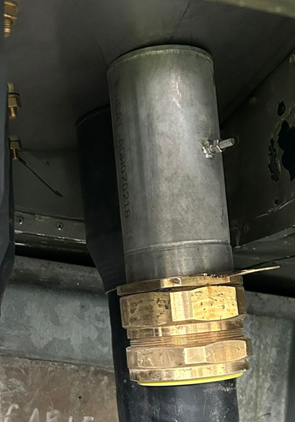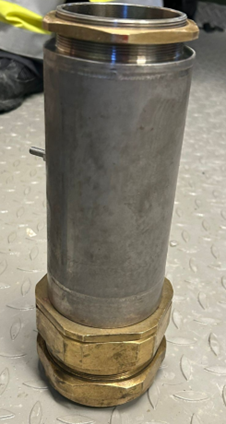Hello
Can anyone offer some help regarding the use of fabricated SWA cable gland adapter/extension pieces?
During installation works, our contractor has made off 2No 5C, 240mm2, SWA cables too short to reach the gland plate.
To avoid replacing the cables, they have site fabricated two "Extension pieces" from some 316 S/S to allow the cables to be terminated (shown below).
We have some reservations accepting the installation, therefore I am seeking some clarity on the following points:
- Is this an acceptable installation method under BS7671?
- What specific clauses in BS7671 would these pieces have to conform to (511.1?)
- is there anything in the Regulations that would allow this installation to be rejected?
Thank you.

